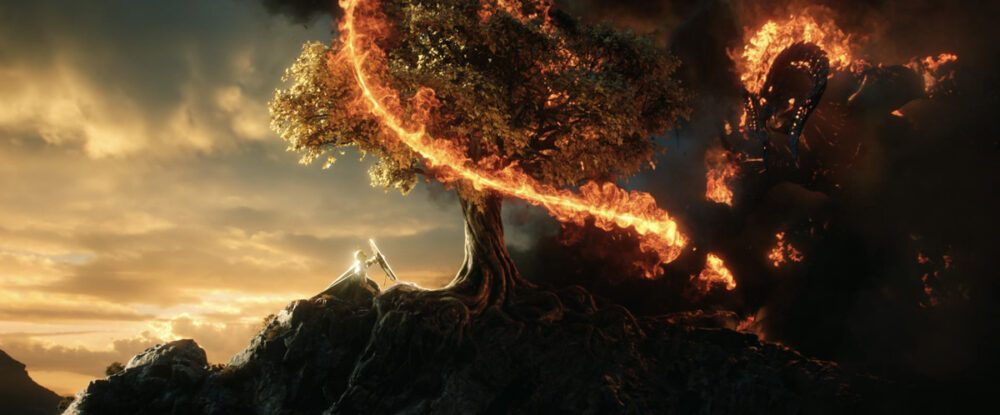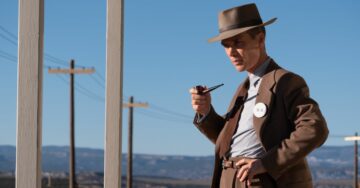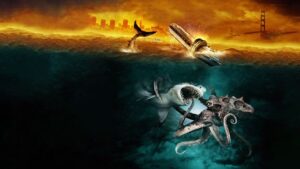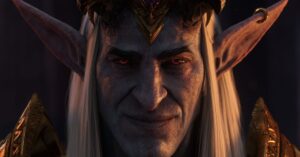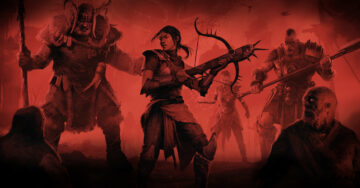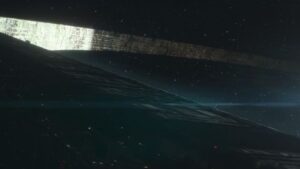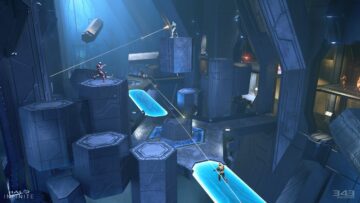The first season of The Rings of Power is in its home stretch, and the dominoes are beginning to fall, reminding even the most casual viewer that eventually all this will become the world of The Lord of the Rings. The fantastical cities and societies we’ve seen this season will crumble to ruin over the next four seasons — some faster than others.
This week, we saw exactly how the beautiful dwarven city of Khazad-dûm will transform into the dark and cursed ruin of Moria, in the form of one of the most harrowing and iconic scenes in Peter Jackson’s Lord of the Rings trilogy. There’s a Chekhov’s gun on the mantelpiece of Khazad-dûm, and one way or another this is all going to end in fire.
[Ed. note: This piece contains spoilers for The Lord of the Rings: The Rings of Power episode 7, “The Eye.”]
As Durin (son Durin) and his father, Durin (dad Durin), have a consequential falling out, the dwarven monarch orders the mithril the prince discovered to be sealed up — but not before meaningfully tossing Elrond’s corrupted-leaf-for-demonstration-purposes down into the chamber. The camera follows the leaf’s gentle fall until it reaches the rocky floor and is rejuvenated by the mithril veins crisscrossing every surface.
Then the leaf is incinerated by a rush of flame from a familiar form: a balrog.
The balrog that killed Gandalf?
Yes, this is the balrog that the Fellowship encountered thousands of years later in the ruins of Moria. In Tolkien’s books, it is the only balrog known to have survived Morgoth’s defeat, by fleeing east and hiding itself in the roots of the Misty Mountains, until it was discovered by the dwarves of Khazad-dûm thousands of years later.
As described in the appendix of The Return of the King, the dwarves of Khazad-dûm “roused from sleep a thing of terror that […] had lain hidden at the foundations of the earth since the coming of the Host of the West: A Balrog of Morgoth. Durin was slain by it, and the year after Náin I, his son; and then the glory of Moria passed, and its people were destroyed or fled far away.”
Or, as immortalized in the voice of Christopher Lee in Jackson’s The Fellowship of the Ring: “The dwarves delved too greedily and too deep. You know what they awoke in the darkness of Khazad-dûm: shadow and flame.”
Is this the same balrog they were talking about a couple episodes ago?
Image: Amazon Studios
Back in episode 6, “Partings,” King Gil-galad recounts the story of an elven warrior and a balrog dueling atop the Misty Mountains, a battle that inadvertently created mithril deep underground. But there’s more than one balrog, after all, and we haven’t been told one way or another if they’re the same being. The entire story is original to Rings of Power, so there’s no Tolkien lore to fall back on here, either.
Wait… there’s more than one balrog?
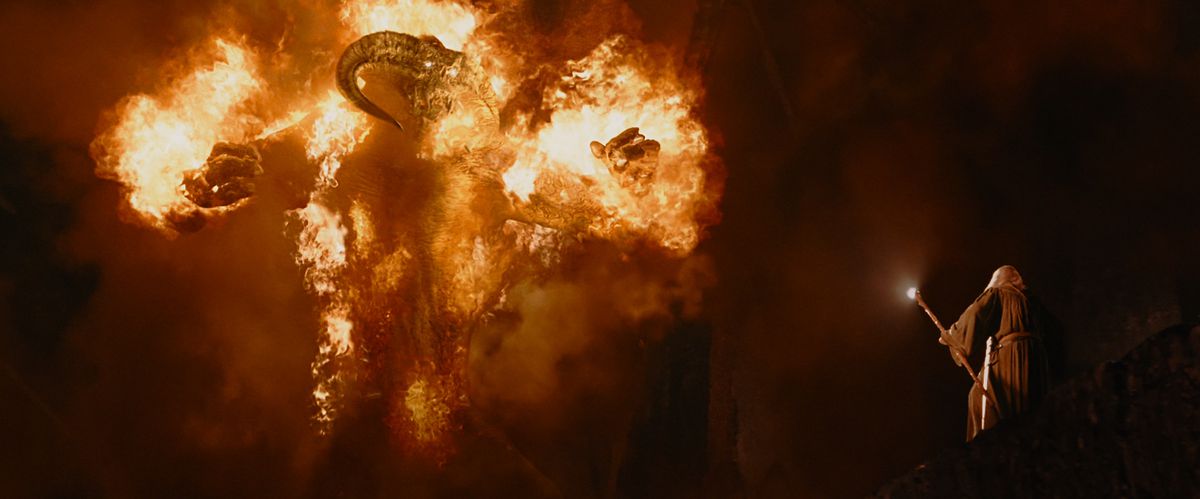
Image: New Line Cinema
Oh, absolutely.
The balrogs were Maia — like Gandalf and Saruman and Sauron himself — and at least some were among Morgoth’s oldest allies, who’d descended with him into darkness when he first betrayed the Valar during the creation of the world. As Middle-earth became the battlefield between Morgoth and the rest of the gods, these spirits became guised in terrible form. “Their hearts were of fire,” says The Silmarillion, “but they were cloaked in darkness, and terror went before them; they had whips of flame.”
Though they were small in number, compared to an army, they were Morgoth’s most terrible servants. They were his generals, his honor guard, and his enforcers — in essentially the same capacity that the Black Riders served Sauron. There are only three stories of a balrog’s defeat in single combat, and in all cases, as with Gandalf, the opposing hero was slain. Only two balrogs were ever distinguished from the rest: Gothmog, their leader; and the unnamed balrog known only as “Durin’s Bane.”
So are we gonna get to see it… bane everything up?
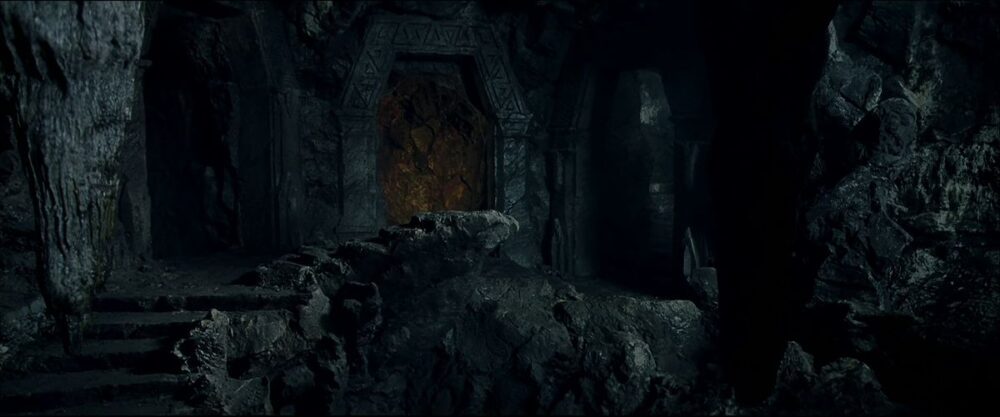
Image: New Line Cinema
That’s an interesting question! It sure seems like Rings of Power is hinting that way, with the younger Durin swearing that when he’s king he’ll mine out the mithril and bring his people a prosperity unheard of. But if Rings of Power wants to wake up the balrog soon, it would be a break with Tolkien’s canon.
The appendices of The Return of the King state that the balrog buried itself so well that dwarves didn’t discover it until the Third Age, a time outside the purview of Rings of Power. The fall of Khazad-dûm took place during the reign of Durin VI, rather than the show’s Durin IV and Durin V — and in Tolkien’s lore, Durins were usually nonconsecutive dwarven rulers, much like the British monarchy.
But then again, Rings of Power is already taking events that occurred over thousands of years of history and condensing them to a single human generation. And that means that Durin’s Bane could really be a potential threat; a sword of Damocles dangling on a flaming whip over an entire dwarven civilization.
